Related Research Articles
Obstetrics is the field of study concentrated on pregnancy, childbirth and the postpartum period. As a medical specialty, obstetrics is combined with gynecology under the discipline known as obstetrics and gynecology (OB/GYN), which is a surgical field.
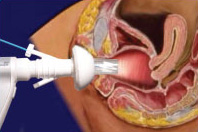
Gynaecology or gynecology is the area of medicine that involves the treatment of women's diseases, especially those of the reproductive organs. It is often paired with the field of obstetrics, forming the combined area of obstetrics and gynaecology (OB-GYN).
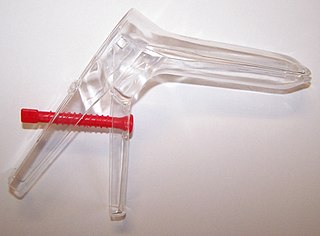
A speculum is a medical tool for investigating body orifices, with a form dependent on the orifice for which it is designed. In old texts, the speculum may also be referred to as a diopter or dioptra. Like an endoscope, a speculum allows a view inside the body; endoscopes, however, tend to have optics while a speculum is intended for direct vision.

Alexander Johnston Chalmers Skene was a British-American gynaecologist from Scotland who described what became known as Skene's glands.

James Marion Sims was an American physician in the field of surgery. His most famous work was the development of a surgical technique for the repair of vesicovaginal fistula, a severe complication of obstructed childbirth. He is also remembered for inventing the Sims speculum, Sims sigmoid catheter, and the Sims position. Against significant opposition, he established, in New York, the first hospital specifically for women. He was forced out of the hospital he founded because he insisted on treating cancer patients; he played a small role in the creation of the nation's first cancer hospital, which opened after his death.
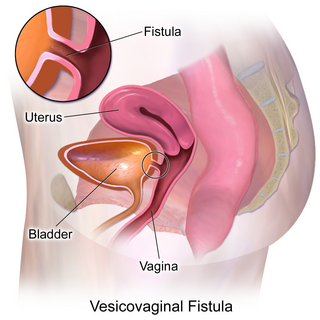
Vesicovaginal fistula (VVF) is a subtype of female urogenital fistula (UGF).

The South Carolina State House is the building housing the government of the U.S. state of South Carolina, which includes the South Carolina General Assembly and the offices of the Governor and Lieutenant Governor of South Carolina. Located in the capital city of Columbia near the corner of Gervais and Assembly Streets, the building also housed the Supreme Court until 1971.
The health of slaves on American plantations was a matter of concern to both slaves and their owners. Slavery had associated with it the health problems commonly associated with poverty. It was to the economic advantage of owners to keep their working slaves healthy, and those of reproductive age reproducing. Those who could not work or reproduce because of illness or age were sometimes abandoned by their owners, expelled from plantations, and left to fend for themselves.
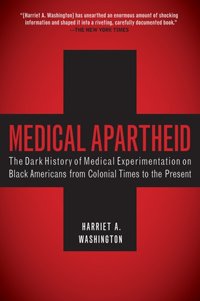
Medical Apartheid: The Dark History of Medical Experimentation on Black Americans from Colonial Times to the Present is a 2007 book by Harriet A. Washington. It is a history of medical experimentation on African Americans. From the era of slavery to the present day, this book presents the first detailed account of black Americans' abuse as unwitting subjects of medical experimentation.
Bettina Judd is an African-American interdisciplinary writer, scholar, artist, and performer.
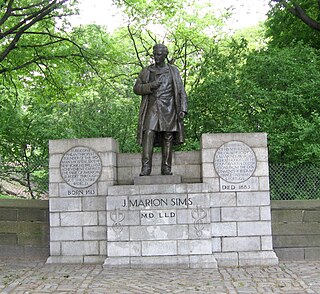
J. Marion Sims is a bronze sculpture depicting the American physician of the same name by Ferdinand Freiherr von Miller.
Anarcha Westcott was an enslaved woman who underwent a series of experimental surgical procedures conducted by physician J. Marion Sims, without the use of anesthesia, to treat a combination of vesicovaginal fistula and rectovaginal fistula. Sims's medical experimentation with Anarcha and other enslaved women, and its role in the development of modern gynaecology, has generated controversy among medical historians.

The Virginia Women's Monument is a state memorial in Richmond, Virginia commemorating the contributions of Virginia women to the history of the Commonwealth of Virginia and the United States of America. Located on the grounds of the Virginia State Capitol, the monument is officially titled Voices from the Garden: The Virginia Women's Monument and features life-sized bronze statues of eleven Virginia women placed in a small granite plaza.

J.C. Hallman is an American author, essayist, and researcher. His work has been widely published in Harper's, GQ, The Baffler, Tin House Magazine, The New Republic, and elsewhere. He is the author of six books, and his nonfiction combines memoir, history, journalism, and travelogue, including the highly acclaimed B & Me: A True Story of Literary Arousal, a book about love, literature, and modern life.
Black maternal mortality in the United States refers to the death of women, specifically those who identify as Black or African American, during or after child delivery. In general, maternal death can be due to a myriad of factors, such as the nature of the pregnancy or the delivery itself, but is not associated with unintentional or secondary causes. In the United States, around 700 women die from pregnancy-related illnesses or complications per year. This number does not include the approximately 50,000 women who experience life-threatening complications during childbirth, resulting in lifelong disabilities and complications. However, there are stark differences in maternal mortality rates for Black American women versus Indigenous American, Alaska Native, and White American women.

Michelle Browder is an American artist and activist known for her sculptures in Montgomery, Alabama, and historical tours of the area.
Dominique Christina is a writer, performer and social activist. She is a champion at the National Poetry Series and Women of the World Poetry Slam.
Vinnie Bagwell is an American sculptor and representational figurative artist.
The Mothers of Gynecology Monument by Michelle Browder was unveiled in Montgomery, Alabama, on September 24, 2021. It is located at 17 Mildred Street, near the National Memorial for Peace and Justice, and is 15 feet (4.6 m) tall. The statues depict Anarcha Westcott, Betsey, and Lucy, three enslaved women who were patients of controversial doctor and "father of gynecology" J. Marion Sims, whose office was nearby. The statues were made from discarded metal objects—the artist asked for contributions from the public—"to symbolize how Black women have been treated and to demonstrate the beauty in the broken and discarded."
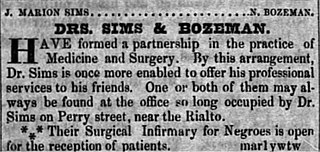
Nathan Bozeman, was a physician and early gynecologist, first in Montgomery, Alabama, and then in New York City. He studied medicine at the University of Louisville, graduating in 1848.
References
- ↑ "Remembering Anarcha, Lucy, and Betsey: The Mothers of Modern Gynecology". NPR.org. Retrieved 2021-03-24.
- ↑ Hallman, J. C. (Nov 2017). "Monumental Error". Harper's Magazine .
- ↑ Hallman, J. C. (2019-11-11). "The Cry of Alice". The Baffler . Retrieved 2021-03-24.
- 1 2 Vanken, Deborah (2021-03-05). "Enslaved women suffered in gynecology experiments. A monument project for them visits L.A." Los Angeles Times.
- 1 2 Zack, Jessica (March 26, 2021). "With 'Mothers of Gynecology,' a sculptor's tribute to enslaved women maimed for science". San Francisco Chronicle .